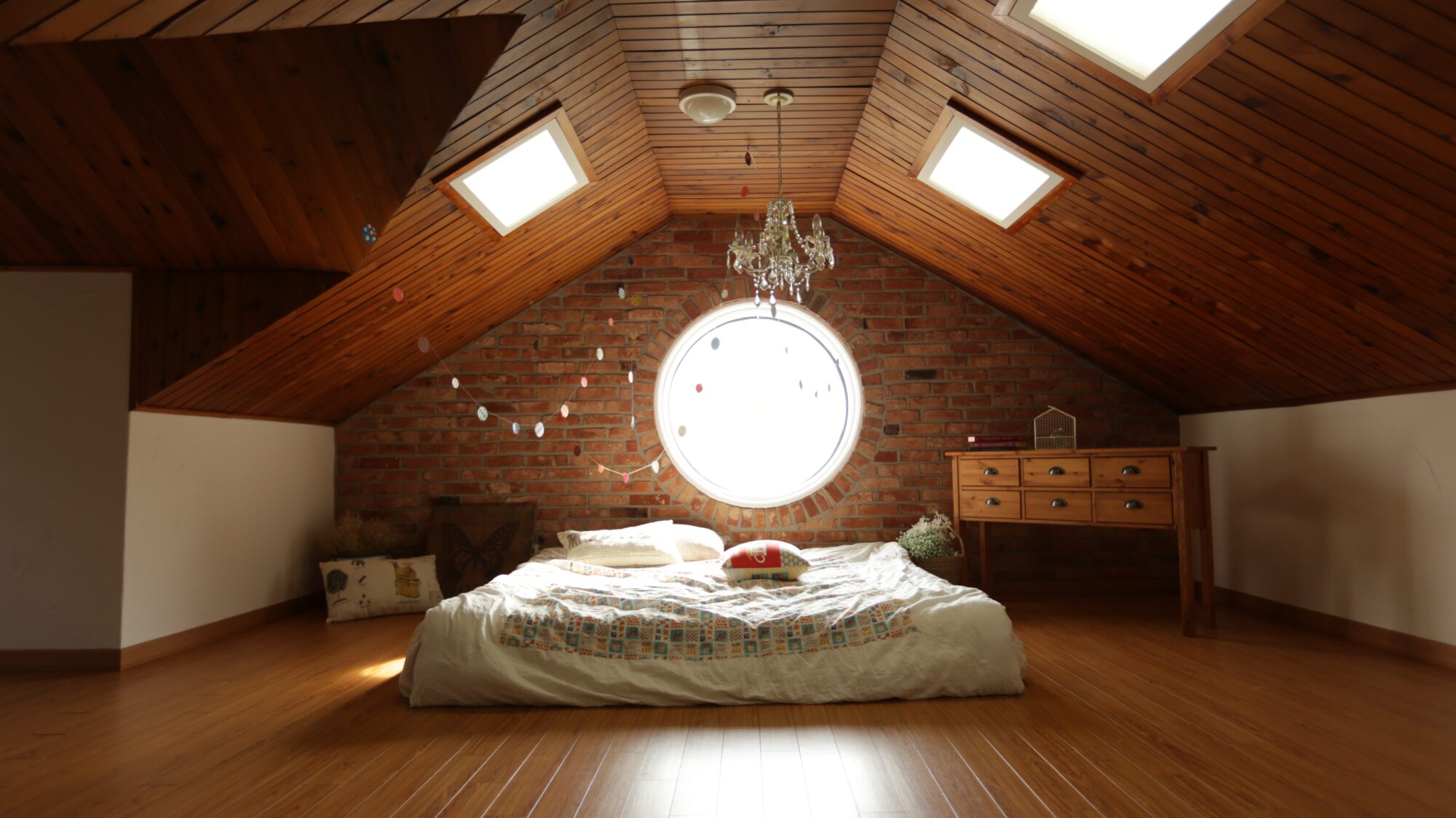Tongue and groove ceilings present a clean finish and create a warm atmosphere in any room. Have you considered the benefits of using wood flooring for this project? Designers, contractors, and homeowners across the country are taking advantage of the affordability, durability, and ease of installation that wood flooring products offer.
Lightweight is the way to go
Engineered wood flooring is the most popular choice for tongue and groove wood ceilings due to its lighter weight and flexible construction. Consider the weight and opt for woods with a light core. These flooring planks will place less strain on the ceiling joists and subfloor while being a fraction of the price of thicker engineered wood floors.
Specifications such as the Janka hardness rating and finish may not matter as much for this project. After all, there isn’t as much foot traffic or furniture. Visual appearance becomes the most important consideration.
Avoid using padded planks or those with a thick profile. Narrow boards work best, although shorter pieces of wide planks can be used.
The Importance of Support
Although you won’t need to worry about constructing a subfloor, wood floor ceilings still require support. Contractors can install wood flooring planks over a flat drywall ceiling in good condition. Drywall plays the role of subfloor in this case, but the ceiling joists must be located and marked. Plan to install the planks perpendicular to the joists and leave room in your budget for additional blocking or drywall alterations to ensure adequate support.
Wood flooring planks can also be installed on an exposed ceiling. Contractors recommend mounting plywood to the joists to create a flat nailing surface. This type of layout allows the planks to run in any direction, even diagonally or in a pattern. Although this method requires more installation time and materials, it also allows for the greatest design flexibility.
Wainscoting or Wood Floors?
Traditional wood ceilings were made with wainscoting—thin, lightweight planks nailed to the ceiling joists. What does wood flooring offer that this long-used material does not?
Appearance is the main difference. Wood flooring comes prefinished in your choice of color. Wainscoting requires painting (and repainting) and does not present the quality finish of wood floor planks. Instantly create a mood with your favorite wood flooring installed above your head.
Redecorating may be easier with wainscoting, although both can be sanded and painted or stained with a different color flooring finish may need additional sanding due to high abrasion resistance.
With the proper support and installation methods, wood floor ceilings may last longer, especially in damp areas like the basement. Consider your budget and the ambiance you’re aiming for. That should help decipher which option offers the greatest value.
Create an attractive finish on your bedroom, family room, dining room, or kitchen ceiling. Whether you prefer a rustic look or the more modern drama of dark stains, using wood flooring on the ceiling adds beauty to your home. Shop your local wood flooring retailer and find an experienced installation contractor to get this project moving forward. Unique Wood Floors offers the greatest selection of engineered hardwoods direct to your home.

